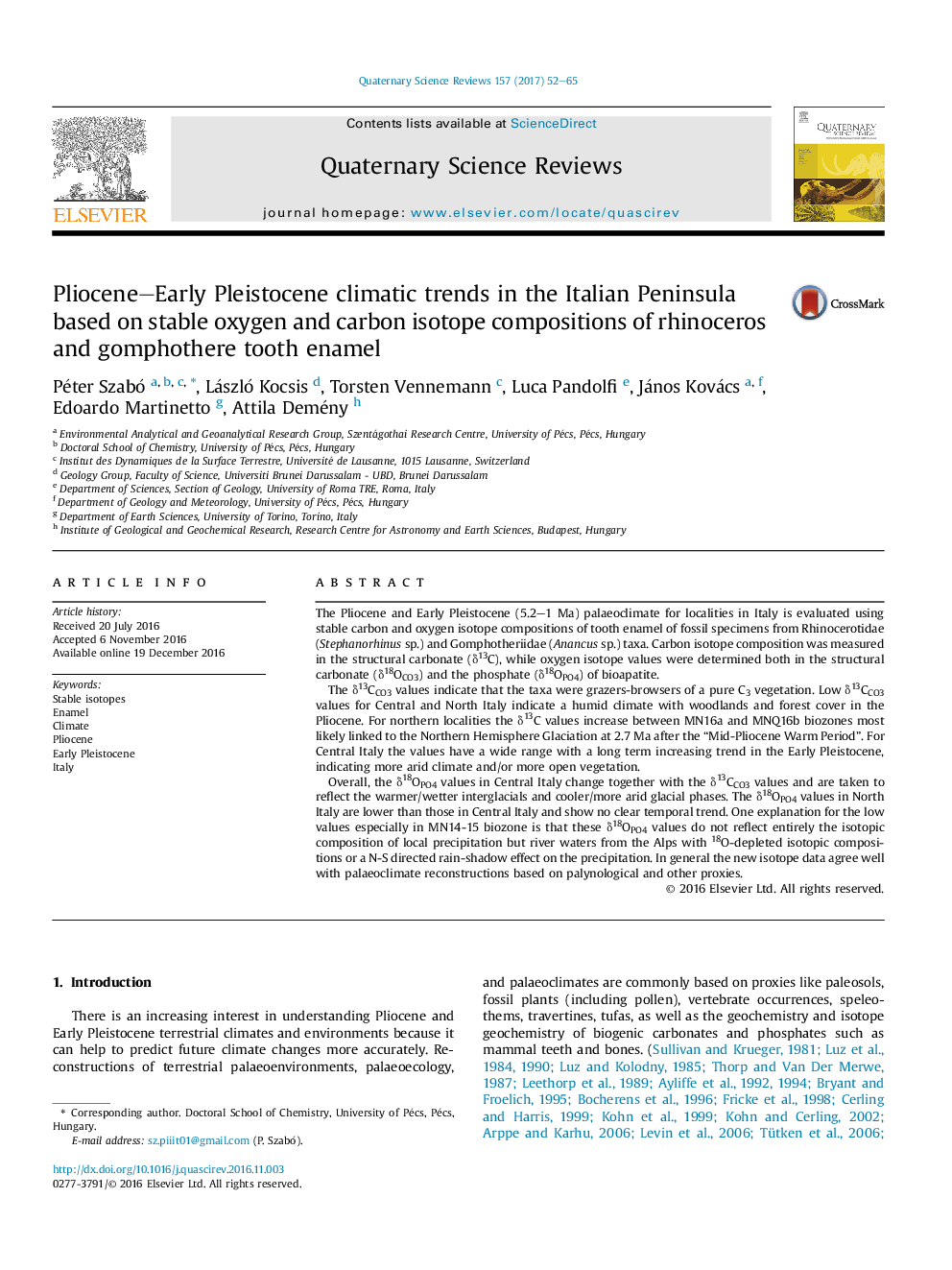| Article ID | Journal | Published Year | Pages | File Type |
|---|---|---|---|---|
| 5786855 | Quaternary Science Reviews | 2017 | 14 Pages |
â¢Î´13CCO3 results indicate that the investigated taxa were grazers-browsers in a pure C3 vegetation.â¢According to the δ18OPO4 results Pliocene was characterized by higher temperatures than Early Pleistocene in Central Italy.â¢In North Italy the δ13C values show a sharp increase between MN16a and MNQ16b biozones that is probably linked to the glaciation at 2.7 Ma.â¢Higher δ13C values in MNQ18 and MNQ19-20 in Central Italy, indicating more open vegetation than in the Pliocene.
The Pliocene and Early Pleistocene (5.2-1 Ma) palaeoclimate for localities in Italy is evaluated using stable carbon and oxygen isotope compositions of tooth enamel of fossil specimens from Rhinocerotidae (Stephanorhinus sp.) and Gomphotheriidae (Anancus sp.) taxa. Carbon isotope composition was measured in the structural carbonate (δ13C), while oxygen isotope values were determined both in the structural carbonate (δ18OCO3) and the phosphate (δ18OPO4) of bioapatite.The δ13CCO3 values indicate that the taxa were grazers-browsers of a pure C3 vegetation. Low δ13CCO3 values for Central and North Italy indicate a humid climate with woodlands and forest cover in the Pliocene. For northern localities the δ13C values increase between MN16a and MNQ16b biozones most likely linked to the Northern Hemisphere Glaciation at 2.7 Ma after the “Mid-Pliocene Warm Period”. For Central Italy the values have a wide range with a long term increasing trend in the Early Pleistocene, indicating more arid climate and/or more open vegetation.Overall, the δ18OPO4 values in Central Italy change together with the δ13CCO3 values and are taken to reflect the warmer/wetter interglacials and cooler/more arid glacial phases. The δ18OPO4 values in North Italy are lower than those in Central Italy and show no clear temporal trend. One explanation for the low values especially in MN14-15 biozone is that these δ18OPO4 values do not reflect entirely the isotopic composition of local precipitation but river waters from the Alps with 18O-depleted isotopic compositions or a N-S directed rain-shadow effect on the precipitation. In general the new isotope data agree well with palaeoclimate reconstructions based on palynological and other proxies.
